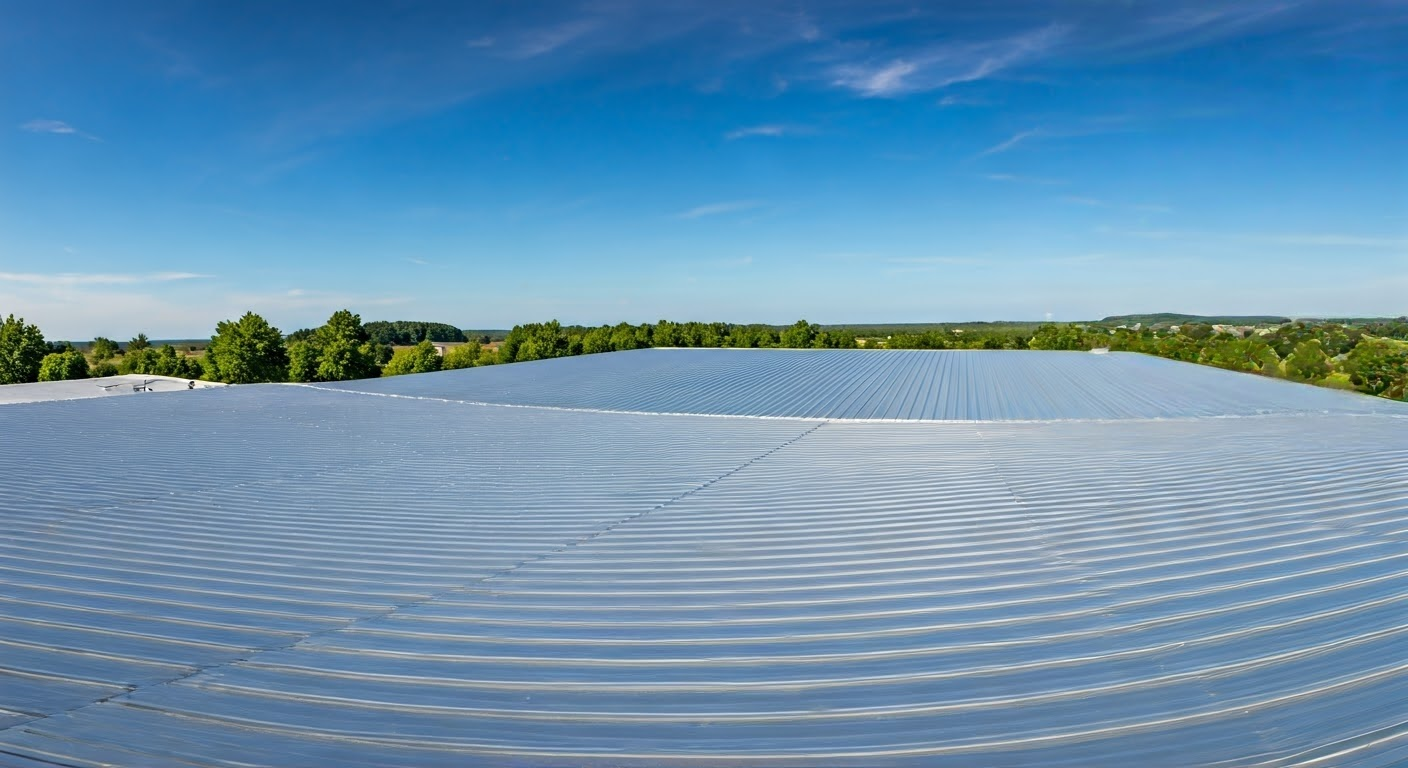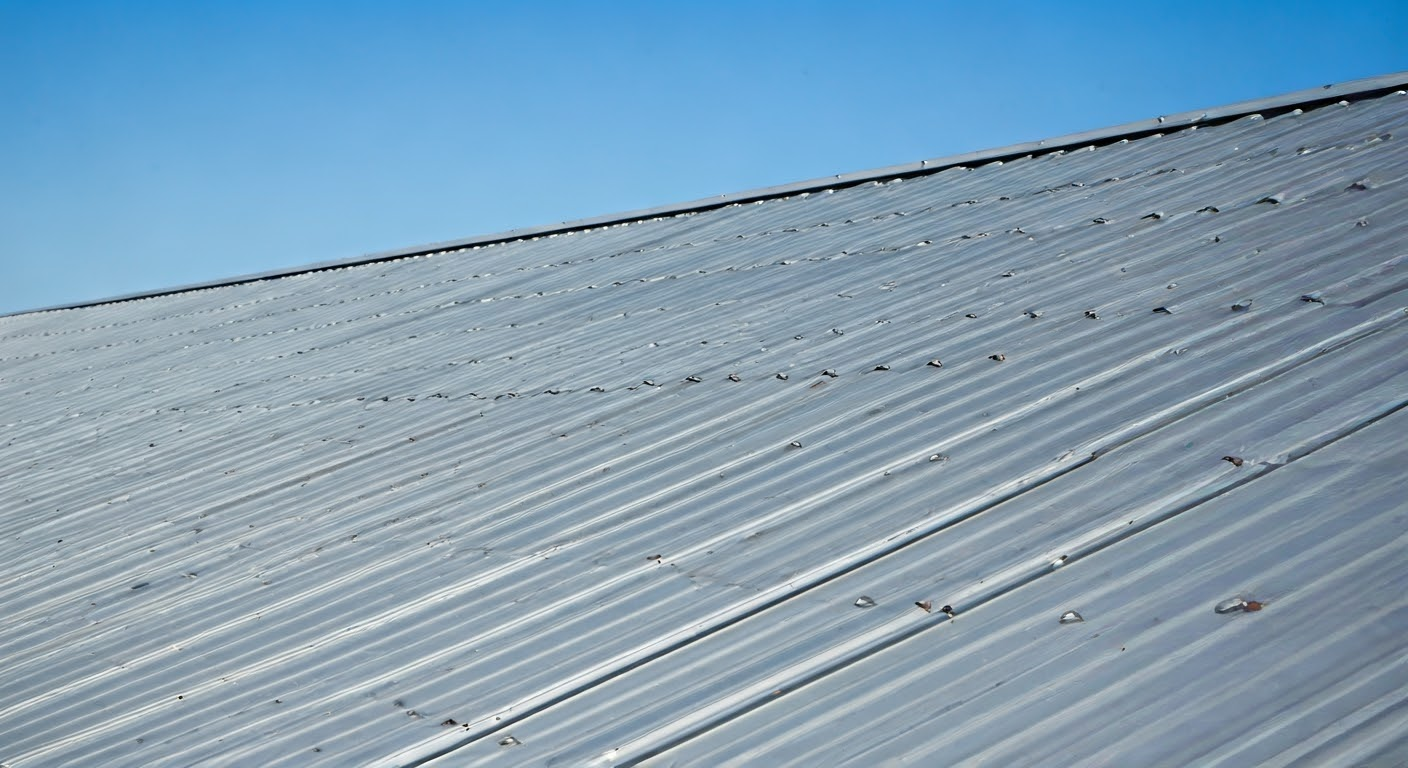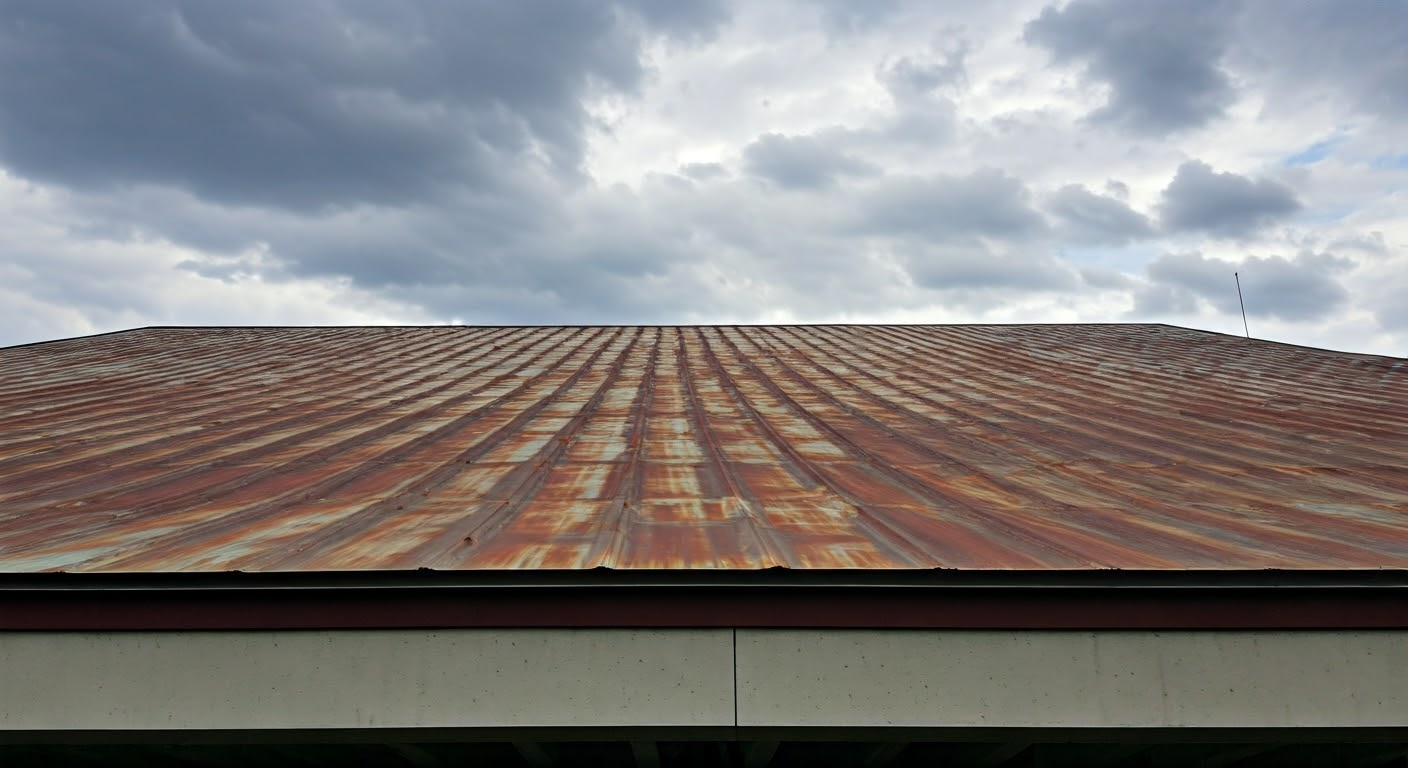
Key Highlights
- Understanding the essential characteristics of commercial metal roofs can help you identify potential issues early on.
- Regular inspections are crucial for maintaining the structural integrity and aesthetic appeal of your metal roofing systems.
- Addressing minor issues promptly can prevent costly repairs and extend the lifespan of your roof.
- Implementing effective repair solutions for leaks and seams is key to ensuring a waterproof environment.
- Hiring professional roofing contractors can provide expert insights, enhancing the durability of your metal roof repairs.
- Timely maintenance boosts energy efficiency, ultimately benefiting both your property and its long-term value.
Introduction
Commercial metal roofs are renowned for their durability and longevity, but even the best roofing systems can encounter issues over time. Understanding the specifics of commercial metal roof repair is essential for property owners seeking to protect their investments and maintain the structural integrity of their buildings. Timely interventions not only prevent costly repairs down the line but also enhance energy efficiency and aesthetic appeal. Prioritizing maintenance ensures that commercial properties continue to perform optimally, safeguarding both the roof and its occupants.
Understanding Commercial Metal Roofing
 Exploring the realm of metal roofing reveals a multitude of advantages, particularly for commercial buildings. Renowned for their durability, metal roofs exhibit exceptional resistance to various weather conditions while promoting energy efficiency. Available in an array of types—such as standing seam and metal roof shingles—these systems cater to diverse applications. The lightweight nature of metal roofing ensures minimal strain on the existing structure, safeguarding its structural integrity. Understanding these key characteristics paves the way for informed choices regarding maintenance and repair strategies.
Exploring the realm of metal roofing reveals a multitude of advantages, particularly for commercial buildings. Renowned for their durability, metal roofs exhibit exceptional resistance to various weather conditions while promoting energy efficiency. Available in an array of types—such as standing seam and metal roof shingles—these systems cater to diverse applications. The lightweight nature of metal roofing ensures minimal strain on the existing structure, safeguarding its structural integrity. Understanding these key characteristics paves the way for informed choices regarding maintenance and repair strategies.
Key Characteristics of Metal Roofs
Durability stands out as a primary characteristic of metal roofs, often exceeding the lifespan of traditional roofing systems. Resistant to harsh weather conditions, these roofs minimize risks associated with severe storms, thereby ensuring structural integrity. Furthermore, metal roofing systems are lightweight, contributing to a lower load on the building’s framework. The versatility of metal roof panels allows for various styles and finishes, enhancing the aesthetic appeal of commercial buildings. Lastly, their energy efficiency contributes to reduced utility costs, making them an attractive option for property owners.
Common Types of Metal Roofs Used in Commercial Buildings
Various types of metal roofs are favored for their durability and efficiency in commercial buildings. Among the most popular is the standing seam metal roof, known for its structural integrity and sleek appearance. Additionally, metal roof shingles offer an aesthetic appeal while providing reliable protection. Other options include corrugated metal panels, commonly utilized for their cost-effectiveness and ease of installation, and aluminum roofing systems, prized for their energy efficiency and lightweight nature. Each type caters to different applications, ensuring functionality and long-lasting performance.
Identifying Signs of Roof Damage
 A keen eye on your commercial metal roof can prevent minor issues from escalating into costly repairs. Look for visual indicators such as rust spots or missing fasteners, which compromise the structural integrity of the roofing system. Additionally, stains on interior walls or ceilings often suggest roof leaks, signaling that immediate action is required. Regularly inspecting your metal roof panels will help detect these potential issues early, ensuring the longevity and performance of your existing roof system.
A keen eye on your commercial metal roof can prevent minor issues from escalating into costly repairs. Look for visual indicators such as rust spots or missing fasteners, which compromise the structural integrity of the roofing system. Additionally, stains on interior walls or ceilings often suggest roof leaks, signaling that immediate action is required. Regularly inspecting your metal roof panels will help detect these potential issues early, ensuring the longevity and performance of your existing roof system.
Visual Indicators That Your Metal Roof Needs Attention
Visible signs that your metal roof requires attention include rust patches, which can compromise the structural integrity over time. Look for uneven metal roof panels or sagging areas, indicating potential support issues beneath the surface. Water stains on ceilings within the building are a warning sign of roof leaks. Additionally, ensure that all fasteners are intact; missing or loose ones can lead to further deterioration. Regular inspections can help identify these visual indicators early, preventing costly repairs.
The Impact of Rust and Corrosion on Metal Roofs
Rust and corrosion pose significant threats to the structural integrity of metal roofs, leading to potential failures in roofing systems. These issues often arise due to prolonged exposure to moisture, which can permeate protective coatings. As rust develops, it compromises metal roof panels, facilitating roof leaks and further damage to the underlying structures. Regular metal roof inspections are crucial for identifying early signs of rust, ensuring that necessary metal roof maintenance and repair services are implemented to extend the lifespan of the roof and maintain its aesthetic appeal.
Preventative Maintenance Strategies
Implementing a robust preventative maintenance strategy ensures the longevity of your metal roofing systems. Regular inspections, conducted at least biannually, help identify potential issues such as missing fasteners or small leaks that can escalate into costly repairs. Addressing these minor problems promptly not only preserves the structural integrity of your roof but also enhances its energy efficiency. A consistent maintenance routine builds peace of mind, ensuring your commercial property remains protected against the elements and maintains its aesthetic appeal for years to come.
Regular Inspection Schedules
Implementing a consistent inspection schedule is critical for maintaining the integrity of a metal roof. Regular assessments allow property owners to detect minor issues, such as missing fasteners or small leaks, before they escalate into costly repairs. Ideally, inspections should occur at least twice a year, preferably in spring and fall, to align with the seasonal changes that can impact roofing systems. Additionally, after severe weather events, a prompt inspection can help assess damage and preserve your metal roof’s long-term performance.
Addressing Minor Issues Before They Worsen
Proactive attention to minor issues can significantly extend the lifespan of a metal roof. Common problems such as small leaks or missing fasteners, if not promptly addressed, may escalate into costly repairs. Regular metal roof inspections help identify these potential issues early, safeguarding the structural integrity of your existing roofing system. Timely maintenance ensures that minor repairs enhance the overall performance of your roof system, ultimately providing peace of mind and preserving energy efficiency in commercial properties.
Repair Solutions for Commercial Metal Roofs
Effective solutions exist for addressing issues that arise with commercial metal roofs. Techniques such as seam sealing and applying waterproofing systems can significantly mitigate roof leaks. Regular inspections aid in identifying damaged metal panels and missing fasteners before they lead to structural integrity problems. For complex issues or extensive damage, selecting a reputable metal roof repair company ensures that the existing roofing system is restored to peak condition. Prioritizing timely interventions contributes to the long-term durability of your commercial metal roof.
Techniques for Fixing Leaks and Seams
Addressing roof leaks and seams effectively is crucial to maintaining the integrity of any metal roofing system. Employing techniques such as sealant application and the use of metal flashing can provide effective solutions in mitigating water intrusion. Additionally, replacing missing fasteners and ensuring proper alignment of metal roof panels are essential for preventing future leaks. Routine inspections coupled with prompt repairs also enhance the longevity of standing seam systems, safeguarding against costly repairs and maintaining the aesthetic appeal of commercial properties.
When to Consider a Professional Roofing Contractor
Certain situations warrant the expertise of a professional roofing contractor. When extensive damage is evident, such as severe leaks or significant rust, trusting an expert ensures proper assessment and repair of the roofing system. Additionally, if the structural integrity of the metal roof appears compromised, a qualified contractor can provide a thorough metal roof inspection. For more complex tasks, including metal roof replacement or installation of new metal roof systems, enlisting experienced professionals guarantees peace of mind and optimal results.
Long-Term Benefits of Timely Roof Repairs
Timely repairs contribute significantly to extending the lifespan of a metal roofing system. By addressing minor issues promptly, property owners can prevent costly repairs or complete replacements down the line. Moreover, maintained roofs enhance energy efficiency, reducing heating and cooling costs for commercial buildings. This proactive approach not only secures the structural integrity of the roof but also provides peace of mind for business owners, ensuring their investment remains protected and that their commercial properties continue to uphold their aesthetic appeal.
Extending the Lifespan of Your Roof
Prolonging the lifespan of a commercial metal roof hinges on proactive maintenance and timely repairs. Regular inspections enable the early detection of minor issues, such as missing fasteners or small leaks, which can escalate into costly repairs if ignored. Implementing protective measures, like advanced waterproofing systems, enhances the structural integrity of the metal roof panels. Additionally, retaining an expert team for routine evaluations ensures that your roofing system operates at peak performance, ultimately extending its durability and optimizing energy efficiency in commercial buildings.
Enhancing Energy Efficiency and Insulation
Optimizing energy efficiency in commercial metal roofs significantly contributes to sustainable building practices. Metal roofing systems reflect heat, reducing cooling costs during hot months and enhancing insulation capabilities. A well-maintained metal roof minimizes energy loss, providing a robust waterproofing system that extends its lifespan. Utilizing insulation materials in conjunction with these roofs further enhances thermal performance. Implementing these strategies not only improves the condition of your roof but also provides peace of mind for building owners, ensuring long-lasting operational savings.
Conclusion
Timely attention to repairs is critical for maintaining the long-term integrity of commercial metal roofs. By implementing preventative maintenance strategies and addressing minor issues swiftly, property owners can safeguard their investments and significantly extend the lifespan of their roofing systems. Moreover, enhancing energy efficiency and aesthetic appeal will provide both peace of mind and financial savings over time. In summary, prioritizing commercial metal roof repair not only protects your investment but also contributes to the overall sustainability of your building.
At Metal Roof Mobile AL, we ensure our clients receive the best possible outcomes. Our commitment to quality workmanship and customer satisfaction is unwavering, making us the top choice for residential Roofing services in our community.
Frequently Asked Questions
What is the typical lifespan of a commercial metal roof?
The typical lifespan of a commercial metal roof ranges from 40 to 70 years, depending on factors such as material quality, installation methods, and maintenance practices. Regular upkeep can help maximize longevity and ensure optimal performance throughout its service life.
